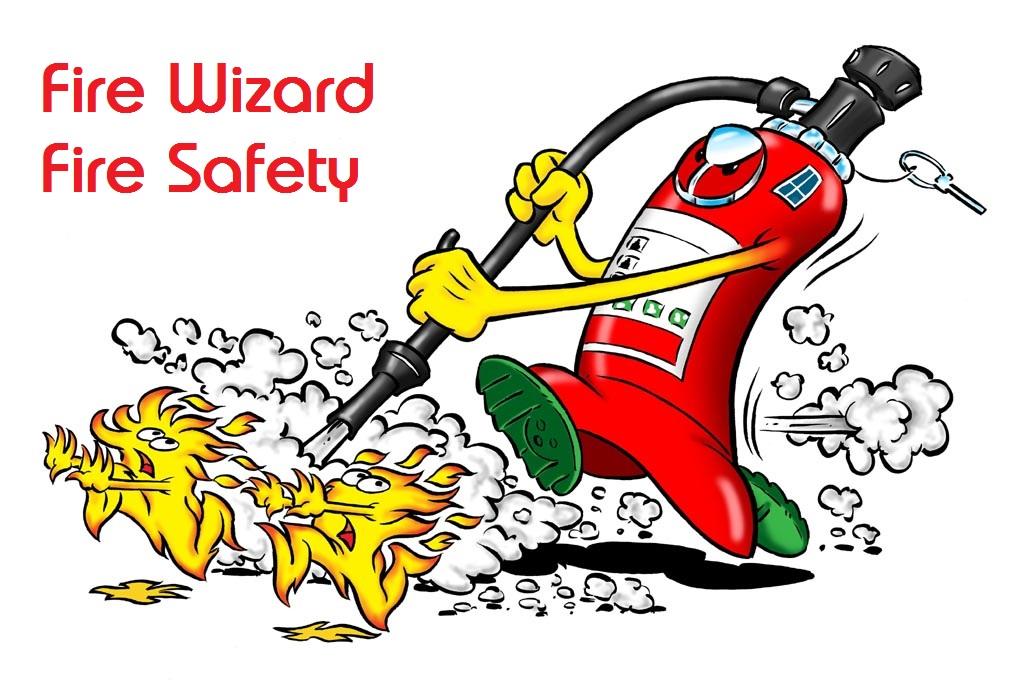-
Posts
2,493 -
Joined
-
Last visited
Everything posted by AnthonyB
-
If you own it they have no authority at all unless there is something odd in any lease. The works don't sound like they are for Fire Safety Order purposes, if you own & occupy it the Smoke & CO Regs don't apply (& they don't to HA rentals in any case) and the Housing Act wouldn't place such an obligation on you. If it's free then I'd let them anyway as it would improve your safety, if it's a cost I'd check what it is (as it may be cheaper to arrange for it to be done yourself). I'd still recommend you have it done- most fire deaths are at home!
- 34 replies
-
- flats
- self contained
-
(and 1 more)
Tagged with:
-
There's no legal requirement to have a BM Trada certificate for a fire door, even a brand new one being fitted and an existing doorset can in some cases be acceptable if in good condition or be upgradable in situ (see relevant section in https://www.local.gov.uk/sites/default/files/documents/fire-safety-purpose-built-04b.pdf). Lots of TMC & freeholders agents are going beyond the minimum requirement as it's not them potentially paying up to £500 for a complete new doorset (some have done this to their costs as leaseholders have taken them to tribunal and won where the leases as well as fire safety benchmarks didn't give them power to demand this).
-
One change in the 2017 edition is that exits that do not lead to an ultimate place of safety don't need a call point, e.g. a door onto an internal courtyard with no further escape.
-
Assuming travel distances are OK the two exits would have to meet the 45 degree rule where if they are closer than 45 degrees apart they are counted as a single door. However as your plan shows the exits separated by construction then as long as the partition was full height to 30 minutes fire resistance you could count them as two exits for escape capacity purposes
-
Approved Document B Part 1 contains guidance as how to meet the functional requirements of the Building Regulations 2010 in Dwellings.Because the installation is Building Work and subject to the regulations Building Control can require the application of the current fire safety standards including the use of Grade D alarms instead of Grade F. The biggest risk of death from fire is in your own home and whilst grade F (battery only not linked) have saved many lives there has in recent years many deaths in battery only alarmed homes due to non functionality. Interlinked alarms afford an earlier warning as when asleep the fire needs to spread to the top of the stairs in order to set off the top landing alarm before you will wake with self contained alarms. Linked alarms can give you valuable extra time at night allowing escape via the stair rather than the windows. Private homes built or subject to significant building work since 1991 have required the fitting of alarms.
-
Chemical Foam used to be predominant in the early to mid 20th century but was rapidly replaced as the century as mechanical foam was developed in the 20's & 30's and gained favour. Foam is stored as a bulk concentrate and depending on the type of foam and application is usually proportioned with water at 1% , 3% or 6%. Most foam solution has been traditionally aspirated through a branch pipe designed to use the venturi effect to agitate the solution and aerate it to create low or medium expansion finished foam, but in more recent times, particularly in portable extinguishers, with synthetic foams such as AFFF non aspirated spray has been used to good effect. Foam solution can be stored premixed, such as in most extinguishers, fixed extinguishing systems and some rapid intervention fire fighting vehicles or can be added by an inline inductor to the water supply at any point up to and including the actual branchpipe. Hi expansion foam usually uses large water pressure driven fans and a fabric tube to create. You could really do with a copy of the Angus Foam Handbook, sadly that isn't on their website and I'm not sure they have print copies left.
-
New ones created as part of a new build or alteration usually have them provided to meet the Building Regulation process. In an existing building the Fire Risk Assessment and associated Personal Emergency Evacuation Plans would determine if retrofitting is required - it's not an automatic retrospective requirement and depends on how well evacuation can be managed without them.
-

How do I know if my CO alarm went off because of Carbon Monoxide?
AnthonyB replied to a topic in Carbon Monoxide Alarms
I'd be wanting further investigations, did they do any flue checks? I'd be loathe to accept that the boiler and flue were all completely safe and whilst it's not impossible for fumes to enter the passenger compartment of a car that's a major cop out. I'd consider a second opinion and to check whoever you use has a genuine and current Gas Safe registration https://www.gassaferegister.co.uk/find-an-engineer/ -

Spraying AFFs Directly onto People?
AnthonyB replied to Martin-123's topic in Other Fire Safety Products
Of course it's better to be sprayed by AFFF than burn to death! The concentrated form is a skin irritant and not good to drink, but the diluted form discharged during fire fighting has no immediate risk, you wouldn't be wearing the clothing for ages afterwards and would have a wash anyway. Any possible side effects are outweighed by the benefit. Most foam is discharged as no or low expansion and if you were to drown/suffocate in it then you would be in conditions where you would still drown if plain water was discharged. High expansion foam is full of air bubbles and can be walked through, although disorientation is a risk. -
Your risk assessment should really have answered this for you - depending on the circumstances there is the possibility of accepting existing doors, the guidance on how to decide that is in here https://www.local.gov.uk/sites/default/files/documents/fire-safety-purpose-built-04b.pdf
-
The fire trainer doesn't sound like a competent fire risk assessor and their advice is severely flawed (otherwise everywhere would just do this). A proper fire door retainer is advisable, depending on the situation a simple indirect self contained device such as a Dorgard or Shuttle may suffice or a more direct device may be required - your competent risk assessor should consult BS7273-4 in determining which will suit.
-
https://envirograf.com/ do such products, it depends on the surface you are treating and the performance needed as to if there is a viable product.
-
The s suffix on FD30s simply means the door has a cold smoke seal (usually a rubber fin or brush) as well as an intumescent strip so in the broadest terms if you've used a combined seal as described it would be an FD30S
-
The employer remains the Responsible Person in law. You sound like you are being asked to be a Competent Person to assist the Responsible Person. Your employer remains legally liable, although other individuals can also be liable if a matter under their control was inadequately dealt with. For example there have been two separate care homes convicted over the years for fire safety issues where in addition to the employer/body corporate being convicted in addition in one case a fire alarm engineer and in another a care home manager were both convicted for their part in the offences.
-
As you are in Scotland the Scottish Technical Standards apply, but certainly in England & Wales it used to be a requirement for these closers to be fitted as standard even in private dwellings, not just rentals, but as everyone just disabled them they changed the requirement to only apply to things such as flat front doors, doors from garages into dwellings etc.
-
You won't find it as Building Regulations are functional and only give broad aims, as does the Fire Safety Order under which the relevant clause is: (f)emergency doors must not be so locked or fastened that they cannot be easily and immediately opened by any person who may require to use them in an emergency; A good fire risk assessment would identify that in the situation you describe an escape mortice deadlock would meet the requirements of Article 14 (2)(f) of the Order
-
A correctly installed Sheltered Housing fire alarm system should not be heard in the flats, also it shouldn't be going off that often and left running for as long. It appears there is inadequate fire safety management of your premises and I would suggest that if the management aren't dealing with it you contact your local fire service's enforcement team (not your local station or community fire safety team) to investigate for you.
-
It should be, if built correctly, in a different fire compartment from the flats so it shouldn't matter if there is a fire there, the flats don't need to know in line with stay put principles. Full evacuation is a last resort in residential and I would be reluctant to extend the system for this unless it was the only viable option...after all in reality it doesn't work as well as people think.
-
Without seeing the premises or at least plans it's difficult, but in smaller cafes, especially without full kitchens (& so no high risk frying), there is often no need for fire doors or fire resisting partitions. Simple starter guidance for small premises is here: https://assets.publishing.service.gov.uk/government/uploads/system/uploads/attachment_data/file/14879/making-your-premises-safe-short-guide.pdf
-
If it's a finished floor height of 11m plus then you should have access to both exits, which if partitioned after current building regulations came into being shouldn't go through another tenants space (it did used to be accepted)
-
Very weird. I'd expect the pool and associated ancillary accommodation to operate full evacuation and so have at least the L5/M type set up it seems to have, but the actual flats I'd expect only to have detectors to the common areas if there are smoke vents, or the common overkill of smokes, sounders, call points. I don't suppose anyone can dig out the original design fire strategy?
-
Current building regulations removed the requirement for internal doors to have closers so they are OK, but it was incorrect to remove the front door closer and you will need to put that back.
-
If it's got it's own closer rather than just being bolted then that usually is a good indicator that the whole width of both doors was required for escape at the time of installation based on the occupancy numbers, discounting of exits etc. as oppose to just for floor moves. If your Means of Escape calculations, done correctly, indicate you only need the main leaf and you want to keep the quarter bolted then you should be OK
-
Technically both, but I'd not get too worried if the one with a lock in was the only one signed. For the cost you might as well do it on both and be belt and braces.

